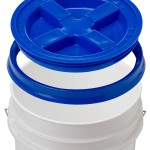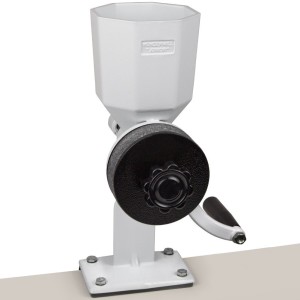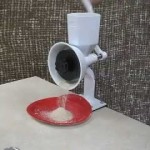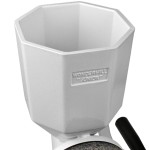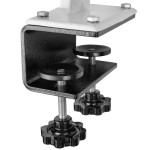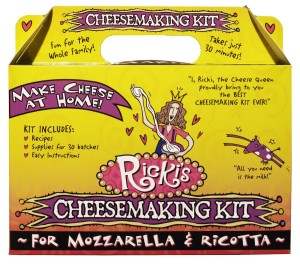 I was thinking about the foods that my family loves the most. A common ingredient in many of them is CHEESE. Well, cheese is quite yummy, but how can you store it in a survival pantry? It looks like I would have to learn to make it myself.
I was thinking about the foods that my family loves the most. A common ingredient in many of them is CHEESE. Well, cheese is quite yummy, but how can you store it in a survival pantry? It looks like I would have to learn to make it myself.
Making my own cheese is not impossible. But how much effort do I want to put in to the fine art of cheese making? I decided start with simple cheeses like Mozzarella and Ricotta, using “Ricki’s Cheese Making Kit.” Since mozzarella and ricotta can be used in so many dishes, I’m sure you will have no trouble at all using the cheese up. Add to salads, sandwiches or Panini, pasta dishes, or eat plain. Mozzarella and Ricotta contain Protein, Calcium, Vitamin A and B 12. Granted, it also contains Fat, but we need fat for brain function. So they is a healthy addition to the diet.
This kit is entry level cheese making (it comes in a cartoon box), so don’t go expecting to open your own cheese shop next week. The” Ricki’s Cheese maker Kit” is straightforward, just follow the directions. The kit comes with enough rennet and citric acid to make around 30 pounds of cheese (not all at once, about a pound at a time). You can order more rennet powder to make more cheese. It also contains cheesecloth, cheese salt, and detailed instructions.
 I chose this kit because you can make the cheese with different types of milk: cow or goat. Also, it is possible to make cheese from powdered milk. This makes it ideal for the Prepper pantry (especially if you don’t have your own cow). If you are using powdered milk, you have to add cream, but cream is sold in shelf stable packages that don’t need refrigeration. You will need a gallon of milk to make a batch of cheese. Read the instructions carefully to make sure you get the right milk… ultrapasturized will not work.
I chose this kit because you can make the cheese with different types of milk: cow or goat. Also, it is possible to make cheese from powdered milk. This makes it ideal for the Prepper pantry (especially if you don’t have your own cow). If you are using powdered milk, you have to add cream, but cream is sold in shelf stable packages that don’t need refrigeration. You will need a gallon of milk to make a batch of cheese. Read the instructions carefully to make sure you get the right milk… ultrapasturized will not work.
My daughter and I have been working with the kit to see just how easy it is, and if it actually works. Our first attempt was a bit of a disappointment. The Mozzarella was too grainy. Because we split our curds in half, it wasn’t a total loss. We did manage to make some delicious spread cheese (like a cream cheese). By the next batch, we had figured it out. Our cheese was actually cheese textured! And it tasted good.
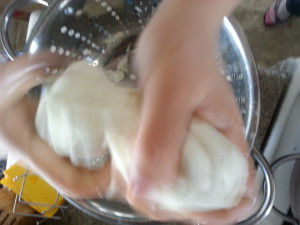 After you get comfortable with the cheese making process, you can even try adding new flavors. Adding chopped herbs from your garden makes the cheese taste delicious, and a bit of liquid smoke gives the mozzarella a wonderful smoky flavor.
After you get comfortable with the cheese making process, you can even try adding new flavors. Adding chopped herbs from your garden makes the cheese taste delicious, and a bit of liquid smoke gives the mozzarella a wonderful smoky flavor.
Now that my daughter and I are basic cheese makers, we know that we will never have to give up on homemade lasagna! Give “Ricki’s Cheese Making Kit” a try, and add something special to your pantry.
Here is the instruction for making cheese on the stovetop without the microwave-
http://www.cheesemaking.com/includes/modules/jwallace/chspgs/9mozz_nonuke/index.html
Here is the link to making the cheese with Dry Milk and Cream
http://www.cheesemaking.com/store/pg/262-MozzarellaDryMilk.html
[notice]This article is just one part of the puzzle, many more Prepper information articles and product reviews are available on the Back40 Blog. Learn about essential Prepper Supplies, gardening (survival seeds), stockpiling tools, the best goods for Barter, keeping your pantry up to date, and taking care of your family in an emergency. (Don’t be overwhelmed…. let Back40 help you survive.)[/notice]


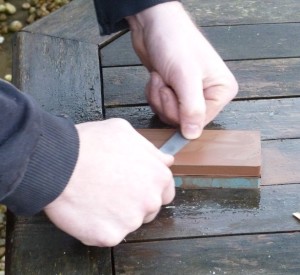










 You don’t need to go to the Fair to enjoy delicious Kettle Corn! If you have a
You don’t need to go to the Fair to enjoy delicious Kettle Corn! If you have a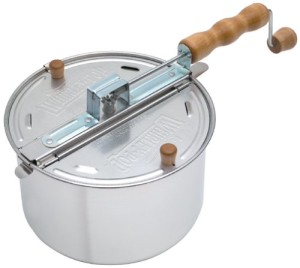




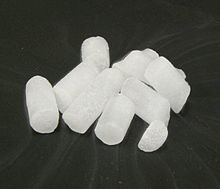 Sealing a food bucket using dry ice
Sealing a food bucket using dry ice






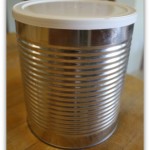 3. #10 Cans- What is a #10 can? Metal cans used by the food industry are standardized, and given a number by size. This does not mean a #10 can holds 10 ounces or 10 pounds (oddly, they hold 102 ounces). The 10 is just a number assigned to a can that is sized 7 inches tall by 6 ¼ inches in diameter. (That little can of Tomato soup you just bought comes in a #2 can).
3. #10 Cans- What is a #10 can? Metal cans used by the food industry are standardized, and given a number by size. This does not mean a #10 can holds 10 ounces or 10 pounds (oddly, they hold 102 ounces). The 10 is just a number assigned to a can that is sized 7 inches tall by 6 ¼ inches in diameter. (That little can of Tomato soup you just bought comes in a #2 can).